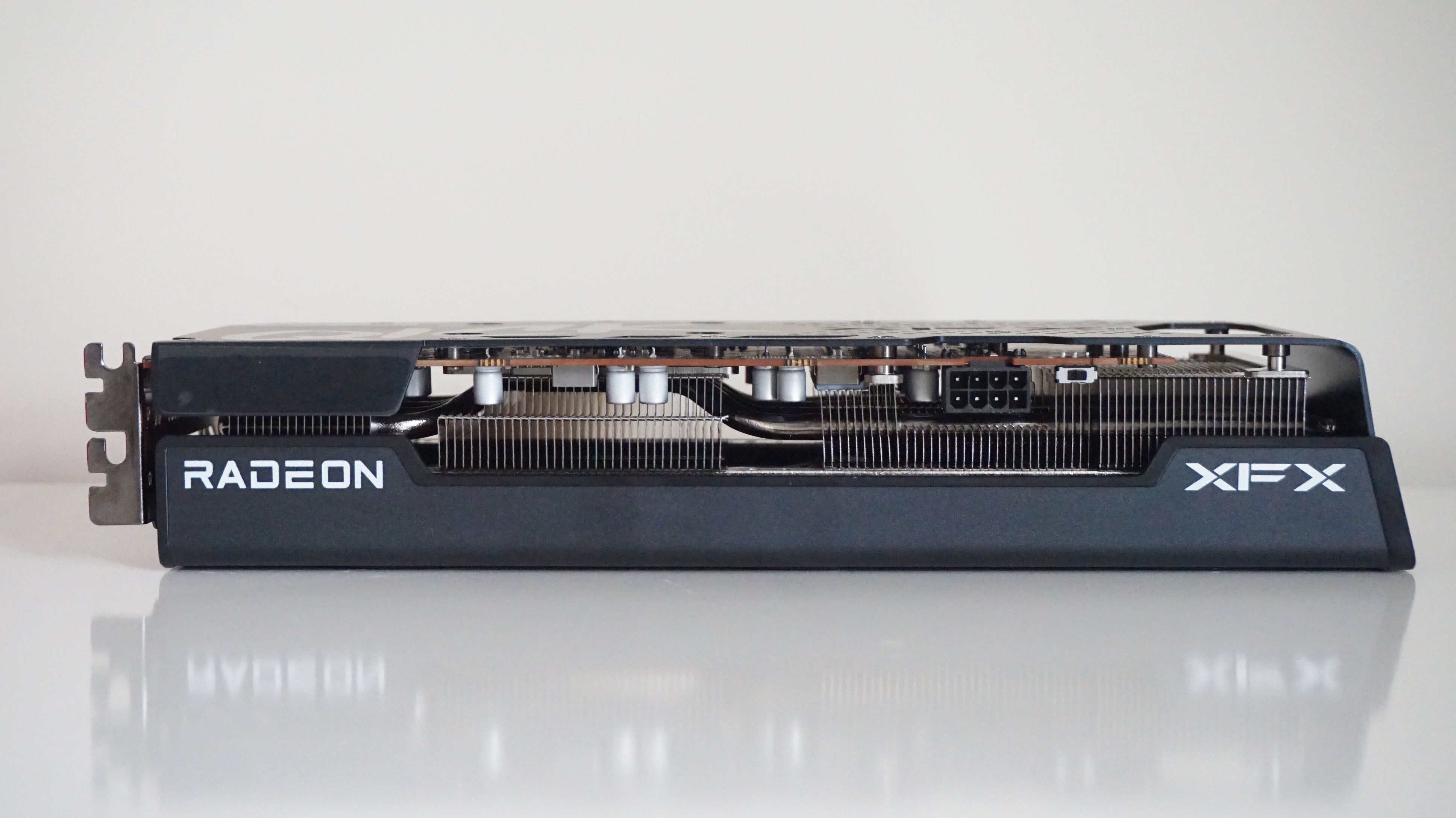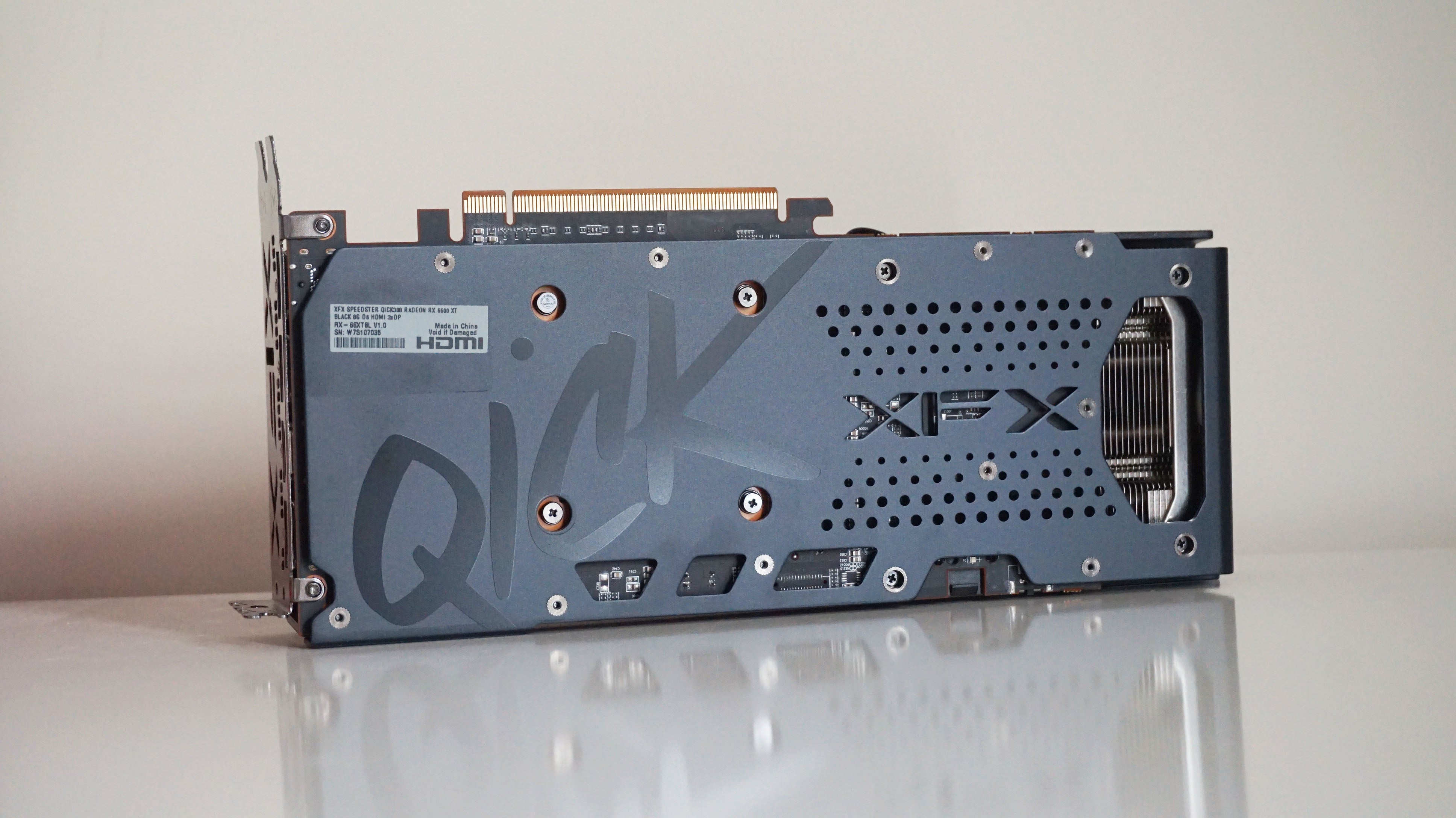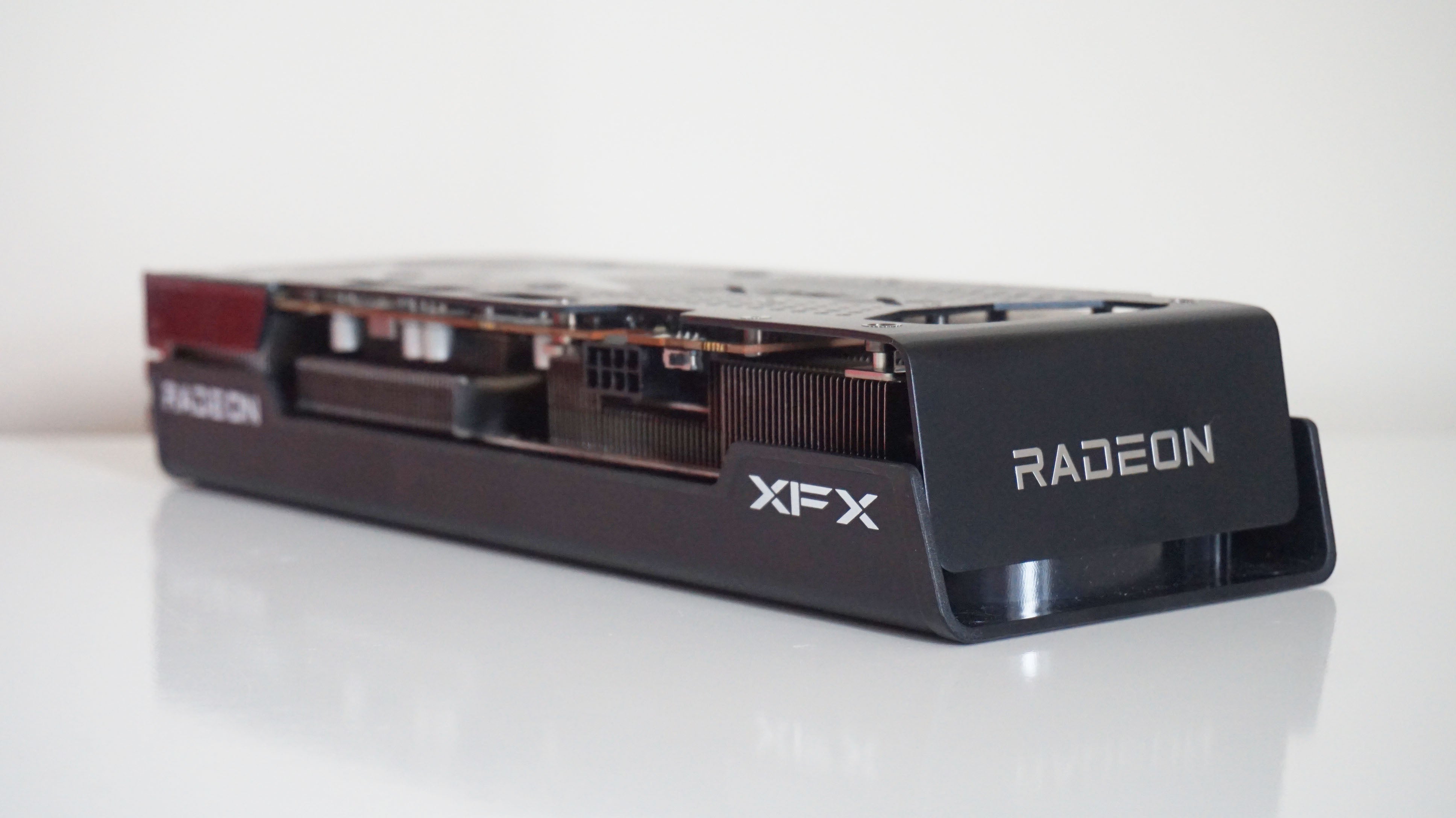It’s a decent shout for anyone still trying to get their hands on a next-gen graphics card, although whether you’ll be any more successful trying to actually buy one when it goes on sale tomorrow remains to be seen. The great graphics card shortage continues to thwart new hardware buyers, and I suspect the RX 6600 XT will probably follow the same path as every other next-gen graphics card has before it this year: appear for two minutes, then disappear into a fog of jacked up prices and ‘out of stock’ stickers. Personally, I’d probably still wait for Nvidia’s RTX 3060 to come back on sale rather than ploughing on with the RX 6600 XT at the moment. While there’s no denying AMD’s latest is a powerful graphics card - as my benchmark results will soon make clear - you still get a lot more by going with Nvidia at the moment, both on the specs side and when it comes to ray tracing support. Indeed, while the RX 6600 XT’s 8GB of GDDR6 memory is nothing to sniff at, it’s still a bit disappointing to see it doesn’t match the 12GB you’ll find on both Nvidia’s RTX 3060, and AMD’s more upmarket RX 6700 XT. After all, we’re already starting to see some games require more than 8GB of VRAM when it comes to playing games on higher quality settings - Watch Dogs Legion, for example - and this may affect the RX 6600 XT’s overall longevity for max settings chasers. In fairness, the other 8GB graphics cards I’ve tested recently haven’t really suffered a huge amount on Ultra quality settings in Watch Dogs Legion, but there’s no telling how other texture-hungry games will run further down the line. There is a small trade-off for having less VRAM than its competition, though - and that’s the RX 6600 XT’s slightly lower power consumption. Whereas Nvidia’s RTX 3060’s typical board power sits at 170W right now, with Nvidia recommending having at least a 550W power supply inside your PC, AMD’s starts at 160W here, with a slightly lower 500W PSU rec to go with it. It’s not much, and probably won’t make a huge difference in terms of overall power usage or the cost of running your PC, but it is a fraction friendlier for those who value this kind of thing, or have their eye on a particularly small PC build (although, given the size of my particular XFX review sample, your mileage may vary on this). As for ray tracing support, AMD’s offering still pales in comparison to what you get from an Nvidia card right now. Progress is being made - AMD’s DLSS competitor, FidelityFX Super Resolution, has finally started making its way into various games now, but the number of them that actually support it (a whole 13 of them) is still pitifully small, and many of the upcoming games currently listed on AMD’s website (which still only stretches to an additional eight games) are still years off from coming out. Meanwhile, the number of games that support Nvidia’s DLSS tech recently passed the 60 mark, and it’s also set to appear in more of the big games coming out later this year as well.
AMD RX 6600 XT performance benchmarks
Because alas, as powerful as the RX 6600 XT is at both 1080p and 1440p, it’s still not really enough to give players a decent ray tracing experience. In Shadow Of The Tomb Raider, for example, the RX 6600 XT managed a silky smooth 74fps average on Highest at 1080p with its top SMAA x4 anti-aliasing enabled at 1080p, but this fell to just 44fps on Highest with its regular SMAA setting switched on when I cranked up its ray tracing effects. The RTX 3060, meanwhile, not only offered another 10fps over the RX 6600 XT without ray tracing switched on at this resolution, but also managed an infinitely more playable 77fps average with the same ray tracing settings in play, practically doubling the performance of what the RX 6600 XT was able to achieve. The RX 6600 XT fared a little better in Metro Exodus, admittedly. In the game’s tough, dedicated benchmarking tool, I saw an average of 53fps on High with High ray tracing enabled here, as well as an average of 85fps average on High without any ray tracing enabled. In fairness, the latter was actually a fraction faster than what the RTX 3060 achieved on High, which hit an average of 82fps in my tests, but Nvidia quickly gained back its lead when I threw ray tracing into the mix. Sticking with the High quality preset, the RTX 3060 not only managed to produce a smoother average of 57fps, but it did so on Ultra ray tracing settings rather than High. You can also forget about playing Cyberpunk 2077 with ray tracing enabled on the RX 6600 XT. Despite CD Projekt Red finally adding ray tracing support in for AMD RX 6000 GPUs earlier in the year, this is one game that really benefits from the extra boost afforded by Nvidia’s DLSS tech. Indeed, whereas the RTX 3060 can manage a playable 53fps average on its RT Medium preset (which is effectively Ultra plus Medium ray tracing settings), I simply wasn’t able to muster anything more than a frame rate in the low teens on the RX 6600 XT at 1080p, even on the lowest settings. The RX 6600 XT can manage the game without ray tracing just fine, averaging 67fps on High and 58fps on Ultra, but if you’re set on seeing Night City at its real-time ray tracing best, you’ll definitely want to get an Nvidia card for it. If you’re less fussed about ray tracing, though, then the RX 6600 XT still has plenty to recommend it. As we’ve just seen, it’s perfectly capable of playing several of today’s biggest and most demanding games at 60fps+ on max settings, while older games will get you frame rates in the 70s and 80s or higher. In The Witcher III, for example, the RX 6600 XT breezed through with an average of 97fps on Ultra settings at 1080p, beating the RTX 3060’s average of 89fps. It also steamed past its Nvidia competition in Assassin’s Creed Valhalla, too, averaging 80fps on Ultra High versus the RTX 3060’s average of 59fps. Its lead in Hitman 3’s Dubai benchmark was even larger. Here, the RX 6600 XT managed an impressive 150fps average on Ultra settings at 1080p, which is almost 20fps faster than the RTX 3060’s average of 133fps. As for Monster Hunter: World, both cards were pretty much neck-and-neck at 1080p on Highest, with the RX 6600 XT averaging 77fps compared with the RTX 3060’s average of 79fps. There was a similar gap in Total War: Three Kingdoms, too, with the RTX 3060 just inching ahead with its average of 70fps on Ultra settings at 1080p, over the RX 6600 XT’s 67fps average. Either way, it’s an impressive set of results. The RX 6600 XT puts in a good showing at 2560x1440, too - as long as you don’t start chucking in ray tracing, of course. It’s not quite the max settings card that the RX 6700 XT is at this resolution, but it was able to hit 60fps on High settings in pretty much all of my benchmarking games mentioned above. The only exceptions were (perhaps unsurprisingly) Cyberpunk 2077, where it managed an average of 40fps (and only 54fps on Medium), and Total War: Three Kingdoms, where it came in with an average of 56fps on High, but these are still pretty good figures regardless. In everything else, it was well over the 60fps boundary line, and should make for a very capable 1440p card going forward, too.
Should I buy an AMD RX 6600 XT?
All in all, the AMD Radeon RX 6600 XT is well worth considering as a next-gen upgrade, but it really depends on how much you want a card that can do ray tracing properly, either at 1080p or higher resolutions. Indeed, 1440p is where Nvidia’s DLSS tech really comes into its own on the ray tracing front with the RTX 3060, giving you a lot more flexibility to hit those higher quality settings and make the most of its real-time effects. Heck, even if you couldn’t care less about ray tracing, the performance boost offered by DLSS on its own is still pretty appealing here, as it lets the RTX 3060 punch well above its usual weight in supported games - and that includes a number of titles in my benchmarking suite, too, allowing it to easily overtake the RX 6600 XT. Of course, if you’re desperate for a card and literally any one will do at this point, then you could certainly do a lot worse than the RX 6600 XT. If you can afford to wait, though (which I’d strongly recommend doing if you can help it), then the RTX 3060 is still the card to aim for now, provided you can find one at a decent price. With the way graphics card prices and stock levels are right now, you shouldn’t upgrade unless you really, really have to.



